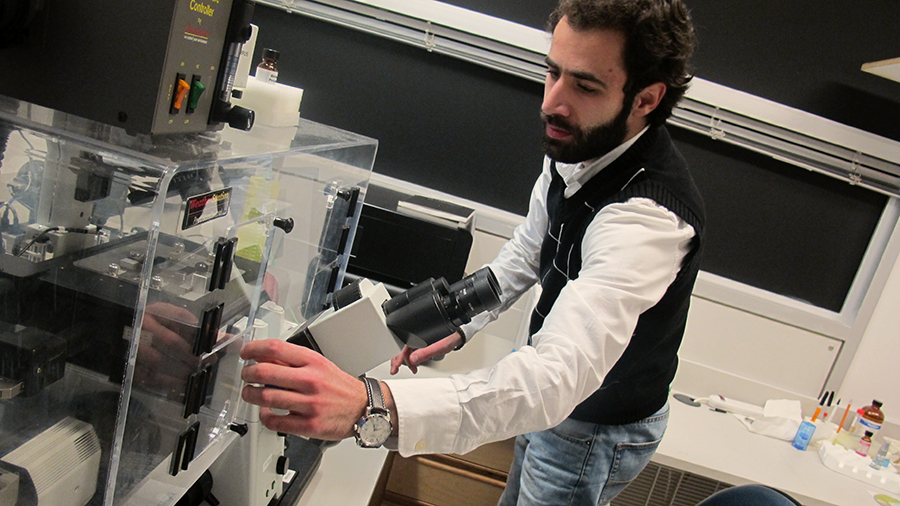
Laura Lee
Canadian lingerie retailer La Vie En Rose has given two University of Alberta graduate students support with their research of breast cancer. Both students received $5,000 from the bursary that La Vie En Rose donated to the Faculty of Medicine & Dentistry in December 2014.
Laura Lee and Fahed Elian were selected to receive funding based on their academic achievement and research progress, among other factors. While both projects vary greatly in their design and approach, both aim to improve survival rates for breast cancer patients.
Lee, a first-year master's student in the lab of Lynne Postovit in the Department of Oncology, will examine the how two micro-environmental cues-hypoxia, a condition of low oxygen, and Nodal, a secretory protein involved in tumor genesis-affect the expression of genes that promote "tumorigenesis", or tumor growth, in cancer stem cells.
Like embryonic stem cells, cancer stem cells have plasticity that allows them to adapt to their environment, making them more resistant to cancer treatment therapies. Cancer stem cells are a subpopulation within tumors and also share the basic characteristics of regular cancer cells, including their ability to grow rapidly and irregularly.
"I'm using two breast cancer cell lines and one H9 human embryonic stem cell line, and treating these cells with hypoxia and/or Nodal and looking for any differences," Lee says, adding that she will be "harvesting cells post-treatment and breaking them down, then looking at the changes to the DNA within."
According to Lee, identifying the differences between embryonic stem cells and cancer stem cells could potentially lead to new targets for breast cancer therapies. "This would be the first step toward that, and hopefully it can lead to more research down the line to show how certain genes are responsible for the differences."
Elian, a second-year master's student in the lab of Dr. Zhixiang Wang in the Department of Medical Genetics, is examining the mechanisms of action of trastuzumab, a drug used to treat a common variation of breast cancer known as ErbB2-positive breast cancer. Trastuzumab was approved by the U.S. Food and Drug Administration for treatment of ErbB2-positive breast cancer in 1998 and for use in combined therapy in 2006.
ErbB2 receptors are located in a cell's plasma membrane and play a role in maintaining normal cellular activity; for example, cellular proliferation and survival through the activation of several downstream pathways. Overexpression of this receptor leads to "tumorigenesis", which occurs in 25-30 per cent of breast cancers. According to Elian, patients who have ErbB2 overexpression have significantly lower survival rates and less time between relapses compared to other breast cancer patients.
"Patients either develop primary, which is initial, or secondary, which is acquired, resistance against this drug," Elian explains, noting that less than 35 per cent of patients initially respond to the drug and 70 per cent of that subset will develop resistance to the medication after just one year of treatment.
Elian will examine how both trastuzumab alone, and trastuzumab in combination with other breast cancer drugs, interact with ErbB2-positive breast cancer cells to find a treatment method that is more efficient and causes less resistance.
While both projects are in the early stages of investigation, Lee and Elian know this funding will help advance their research as the projects develop.
"Any funding to power basic research will move [that] research forward and add more positive energy to the research," Elian says in reference to the bursary from La Vie En Rose.
